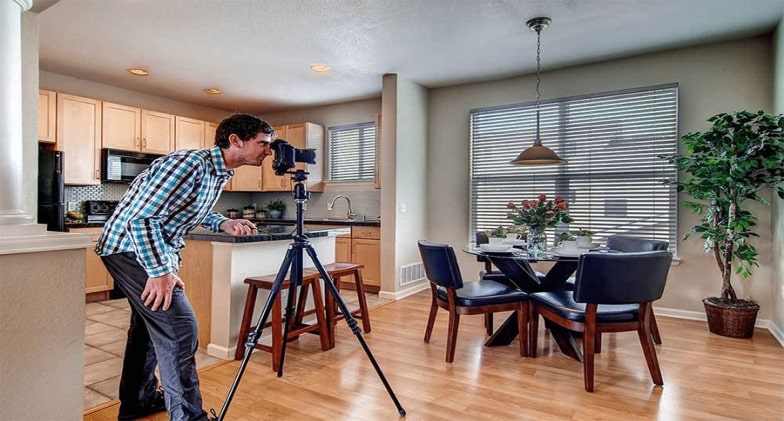Are you qualified to work as a real estate photographer? Are you provided with the appropriate talents and unique inventiveness to set yourself apart from the competition?
These are only two of the top commonly asked questions in this industry regarding out-performing opponents. But, even more than talents and imagination, the selection of camera gear (and its extras) is critical, particularly for ambitious real estate photographers.
As with real estate, even the most basic photographic equipment may be sufficient for aspiring photographers. As your talents improve, you may be able to update to new machinery as you progress through the real estate company structure. Here is some essential equipment you will need:
1. Wide Angle Lens:
- Use lenses with a focal length of 12-24mm or 10-22mm
- Realistic feel
- Resist converging vertical lines
- Make small rooms appear larger
Whenever it concerns real estate photography, having a wide-angle lens is as crucial as having a good camera. When photographing the inside of a room, a wide-angle lens such as the 12-24milimeter or the 10-22 millimetre cameras will allow you to get the entire perspective of the scene.
Since wide-angle lenses let small areas appear large and airy, one of the consequences of employing a wide-angle lens on the spectator is that he feels as if he is genuinely within that room. Tilt-shift lenses can help you avoid vertical lines overlapping.
2. Camera:
In the industry, there are four primary types of digital cameras:
- Smartphones and tablet devices
- DSLR
- Mirrorless
- Compact
Skilled photographers employ DSLRs (digital single-lens reflex cameras) and mirrorless cameras, which are also popular among amateur photographers. Those were the only cameras that would produce high-quality real estate images that would sell. DSLRs and mirrorless cameras work similarly, but there are several strong contrasts.
Compact cameras are small, but their capabilities are restricted. They’re also called as ‘point – and – shoot cameras because they’re mostly automated and provide you with minimal command over the brightness adjustments.
3. Tripod:
Your cameras or lenses are not the most critical real estate photography equipment item. It’s a tripod. Tripods enable you to make sure that each house image is shot from the same level, giving homebuyers the impression that they are strolling around the house digitally.
Tripods also ensure that every shot you take is as straightforward as possible, even if you’re photographing in low-light conditions.
4. Reflectors and Flash:
An external flash is a source of illumination that you may connect to your camera body straightly. A flash is a valuable tool when photography in low-light situations where you can’t build up lighting gear. On occasions like anniversaries, festivals, and seminars, you’ll want to use your external flash.
A reflector or bounce will be necessary if you like direct light photography. Reflectors throw natural light back into the room, filling in shadows and creating a more balanced picture.
5. Drone:
Real estate aerial photography is getting increasingly popular as drones gain in favour. A specific drone for real estate photography is required to depict the house from a bird’s-eye view. It can be used for a variety of external photographs.
Capture a lawn, courtyards, residence, a portion of the road, or even the rest of the region, to give homebuyers more data about the estate. Today drone manufacturers produce unique models that make stunning photographs.
6. Trigger:
The remote camera trigger is helpful when you have to snap a photo without holding the camera. It activates the shutter and enables you to capture clear photographs. Long exposures are required for photographing gloomy rooms.
Any camera work in these situations can cause the image to become fuzzy. Triggers might assist atlanta photographers and others in avoiding these issues. These wireless triggers will also come in handy for HDR real estate photos. The most important thing is to find one that matches your cameras.

